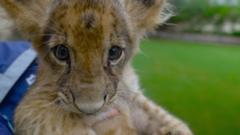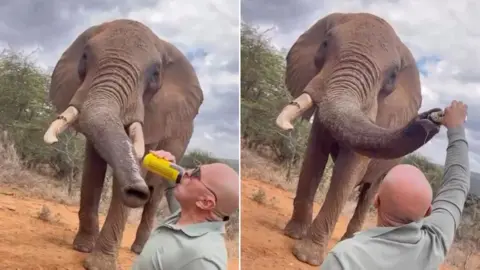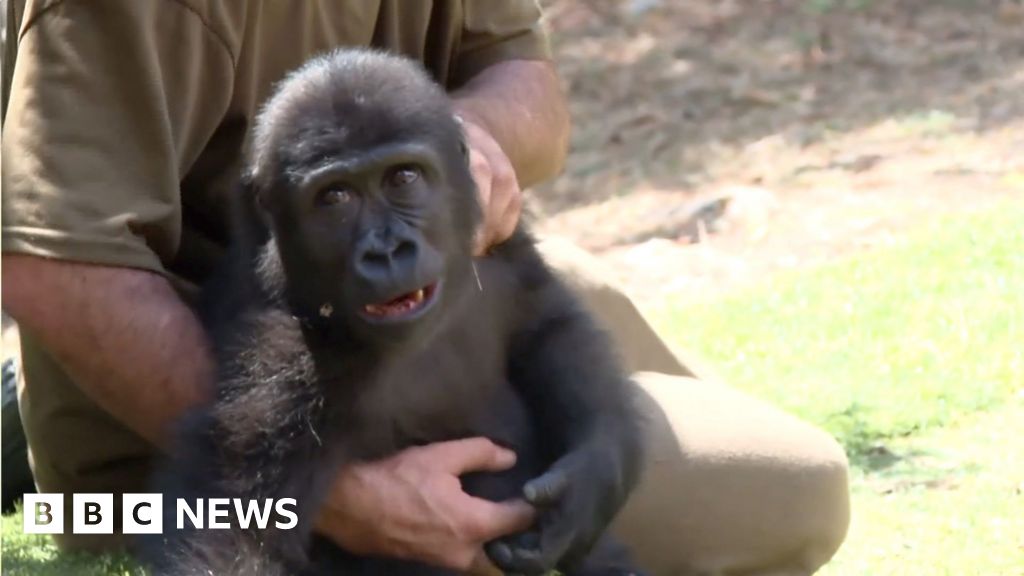In the outskirts of Lahore, a farmhouse presents a stark contrast to the changing landscape of big cat ownership in Pakistan. Owned by Fayyaz, the property houses 26 lions and tigers, visibly distressed by the rain-soaked ground. Fayyaz claims the animals are "happy here," despite one lion's aggressive roar, revealing the complexities faced by private animal owners amid governmental scrutiny.
Historically, big cats in Pakistan have symbolized prestige and power, with recent trends seeing them paraded at social events. However, a spate of incidents involving pet lions has prompted a severe government crackdown. Following a lion's attack on a woman and her children, authorities are now enforcing stringent regulations that require owners to register their animals, pay fines, and limit their holdings to 10 big cats of two species. Non-compliance may result in fines reaching 200,000 Pakistani rupees or imprisonment for up to seven years.
Wildlife officials are increasingly on the alert, investigating clandestine breeders who have been operating without licenses, fostering an underground culture of illegal ownership. Upon inspection of a nearby property, officials discovered five lion cubs pacing in cages, only to find that their parents were likely hidden elsewhere. Following these raids, several cubs have been relocated to Lahore's Safari Zoo, facing delays due to health assessments and suspected inbreeding issues among the captive population.
Despite the urgency of the crackdown, officials acknowledge that the measures merely scratch the surface of an extensive problem, with estimates of hundreds, if not thousands, of undeclared big cats in Punjab alone. Mubeen Ellahi, the director general of Wildlife & Parks, anticipates that it could take up to six months to address the situation adequately.
As regulations tighten, Fayyaz faces a dilemma about the future of his facility transformed into a zoo within a three-month timeframe. Skepticism surrounds the establishment of zoos, however, with advocates like Altamush Saeed calling for dedicated sanctuaries rather than mere compliance-driven facilities. Animal rights groups argue for long-term systemic solutions, urging the government to develop transparent practices for improving the welfare of big cats.
As Pakistan navigates the complexities of wildlife regulation, the balance between public safety, animal welfare, and cultural significance remains precarious and critical.
Historically, big cats in Pakistan have symbolized prestige and power, with recent trends seeing them paraded at social events. However, a spate of incidents involving pet lions has prompted a severe government crackdown. Following a lion's attack on a woman and her children, authorities are now enforcing stringent regulations that require owners to register their animals, pay fines, and limit their holdings to 10 big cats of two species. Non-compliance may result in fines reaching 200,000 Pakistani rupees or imprisonment for up to seven years.
Wildlife officials are increasingly on the alert, investigating clandestine breeders who have been operating without licenses, fostering an underground culture of illegal ownership. Upon inspection of a nearby property, officials discovered five lion cubs pacing in cages, only to find that their parents were likely hidden elsewhere. Following these raids, several cubs have been relocated to Lahore's Safari Zoo, facing delays due to health assessments and suspected inbreeding issues among the captive population.
Despite the urgency of the crackdown, officials acknowledge that the measures merely scratch the surface of an extensive problem, with estimates of hundreds, if not thousands, of undeclared big cats in Punjab alone. Mubeen Ellahi, the director general of Wildlife & Parks, anticipates that it could take up to six months to address the situation adequately.
As regulations tighten, Fayyaz faces a dilemma about the future of his facility transformed into a zoo within a three-month timeframe. Skepticism surrounds the establishment of zoos, however, with advocates like Altamush Saeed calling for dedicated sanctuaries rather than mere compliance-driven facilities. Animal rights groups argue for long-term systemic solutions, urging the government to develop transparent practices for improving the welfare of big cats.
As Pakistan navigates the complexities of wildlife regulation, the balance between public safety, animal welfare, and cultural significance remains precarious and critical.



















